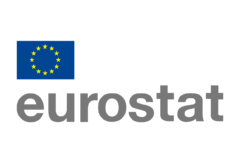HICP w UE – sierpień 2022


The Harmonised Index of Consumer Prices (HICP) gives comparable measures of inflation for the countries and country groups for which it is produced. It is an economic indicator that measures the change over time of the prices of consumer goods and services acquired by households. In other words, it is a set of consumer price indices (CPIs) calculated according to a harmonised approach and a set of definitions as laid down in Regulations and Recommendations.
In addition, the HICP provides the official measure of consumer price inflation in the euro area for the purposes of monetary policy and the assessment of inflation convergence as required under the Maastricht criteria for accession to the euro.
The HICP is available for all EU Member States, the United Kingdom, Iceland, Norway and Switzerland. In addition to the individual country series there are three key country-group aggregate indices: the euro area (EA), the European Union (EU), and the European Economic Area (EEA), which, in addition to the EU, also covers Iceland and Norway, although part of the EEA — Liechtenstein — is not included in the EEA HICP aggregate.
The official country-group aggregates reflect the changing country composition of the EA, the EU and the EEA. The HICP for new Member States is chained into the aggregate indices at the time of accession. The compilation of the aggregates following the UK leaving the EU (‚Brexit’) is documented in the document ‚Compilation of the HICP EU and EEA aggregates following the Brexit’. For analytical purposes Eurostat also computes country-group aggregates with stable country composition over time.
The HICP for North Macedonia, Serbia and Turkey (candidate countries) are also published, with their data flagged as ‚d’ — ‚definition differs’ (form more information on flags, see table below).
A proxy-HICP for the all-items and main aggregates is also available for the USA.
National HICPs are produced by National Statistical Institutes (NSIs), while the country-group aggregates are produced by Eurostat.
The data released monthly on Eurostat’s free dissemination database include price indices and rates of change (monthly, annual and 12-month moving average changes). In addition to the headline figure ‚all-items HICP’, around four hundred sub-indices for different goods and services and over thirty special aggregates are available, including the HICP at administered prices (HICP-AP). Once a year, with the release of the January data, the relative weights for the indices and the special aggregates, are published for the individual countries and for the European aggregates. The composition of the HICP-AP aggregates, i.e. which sub-indices are classified as mainly or fully administered by each Member State, is also updated at the same time. More information on HICP-AP can be found in the HICP Methodological Manual, under point 9.3.
Eurostat publishes early estimates, called ‚HICP flash estimates’, of the euro area overall inflation rate and selected components. They are published monthly, usually on the last working day of the reference month, and disseminated in a news release, in the database and in a Statistics Explained article.
The HICP at constant tax rates (HICP-CT) follows the same computation principles as the HICP, but is based on prices at constant tax rates. The comparison with the standard HICP can show the potential impact of changes in indirect taxes, such as VAT and excise duties, on the overall inflation (more information can be found in the ‚HICP-CT Reference methodology document’).
Information on the compilation of the HICP during the COVID-19 crisis is available in the HICP methodology page, under ‚COVID-19 and HICP’.
